The automotive market is shifting rapidly towards electrification, with players like Opel and Renault leading the way. In this article, we will compare the Opel Grandland and the Renault Scénic, two popular SUVs that offer both family-friendly features and modern powertrains. Whether you prioritize performance, practicality, or cutting-edge technology, we’ll break down what each vehicle has to offer.
Vauxhall Grandland vs Renault Scénic – Which one offers the better deal?
Two cars, one duel: Vauxhall Grandland meets Renault Scénic.
Which one wins in performance, efficiency and value for money? Find out now!
Design and Dimensions
First impressions matter, and both the Opel Grandland and Renault Scénic have distinctive aesthetics. The Opel Grandland boasts a robust SUV design with dimensions of 4650 mm in length, 1934 mm in width, and 1665 mm in height, making it a commanding presence on the road. In contrast, the Renault Scénic is slightly smaller at 4470 mm long, 1864 mm wide, and 1571 mm high, providing a sportier yet compact feel.
Powertrains and Performance
When it comes to powertrains, the Opel Grandland offers a versatile engine lineup, including petrol MHEV, plug-in hybrid, and fully electric options. With power outputs ranging from 136 HP to 213 HP, drivers can choose between different performance levels. The Grandland's hybrid variants provide an electric range of up to 585 km and boast fuel consumption as low as 0.8 L/100 km for the plug-in model.
The Renault Scénic takes a more focused approach with its all-electric powertrains, offering up to 220 HP. While its electric range reaches a maximum of 598 km, the consumption is slightly higher than the Grandland, at around 17.6 kWh/100 km. The Scénic's focus on electric power results in agile acceleration, with its quickest variant reaching 0-100 km/h in just 7.9 seconds.
Interior and Cargo Space
Both vehicles provide comfortable seating for up to five passengers, but the Opel Grandland edges out slightly in terms of cargo capacity. With a trunk space of 550 L, it accommodates family trips and grocery runs seamlessly. The Renault Scénic, while still spacious with 545 L, offers smart storage solutions and an interior designed with family needs in mind.
Technological Innovations
The technological landscape of both SUVs is impressive. The Opel Grandland is equipped with an advanced infotainment system, offering smartphone integration, navigation, and a range of connectivity features that ensure a modern driving experience. Additionally, it comes with multiple driving modes designed for efficiency and performance.
On the other hand, the Renault Scénic is ideal for tech-savvy families with its comprehensive safety features and innovative driver assistance systems. The Scénic incorporates a host of smart technologies, including a large touchscreen display, voice recognition, and autonomous driving capabilities in certain situations.
Safety Standards
Both vehicles are designed with family safety as a priority. The Opel Grandland receives respectable ratings for crash safety and includes various advanced safety features, making it a reliable option for families. The Renault Scénic also garners high safety ratings, equipped with safety nets and collision avoidance technology that enhance its appeal as a family-oriented vehicle.
Conclusion: Which One to Choose?
Choosing between the Opel Grandland and the Renault Scénic ultimately boils down to your personal preferences and driving needs. The Grandland excels in versatility with its range of powertrains and cargo space, making it suitable for varied lifestyles and applications. Meanwhile, the Scénic shines with its all-electric lineup, sporty handling, and advanced technological features.
In a rapidly evolving automotive landscape, both models reflect the commitment of their manufacturers to innovation and sustainability, making them standout choices in the SUV segment. As the trend towards electrification continues, either vehicle would be a commendable choice for eco-conscious consumers seeking stylish yet functional transportation.
Here’s where it gets real: The technical differences in detail
Costs and Efficiency:
When it comes to price and running costs, the biggest differences usually appear. This is often where you see which car fits your budget better in the long run.
Vauxhall Grandland has a slight advantage in terms of price – it starts at 32600 £, while the Renault Scénic costs 34600 £. That’s a price difference of around 2066 £.
In terms of energy consumption, the advantage goes to the Renault Scénic: with 16.60 kWh per 100 km, it’s hardly perceptible more efficient than the Vauxhall Grandland with 17.80 kWh. That’s a difference of about 1.20 kWh.
As for range, the Vauxhall Grandland performs to a small extent better – achieving up to 694 km, about 96 km more than the Renault Scénic.
Engine and Performance:
Power, torque and acceleration are the classic benchmarks for car enthusiasts – and here, some clear differences start to show.
When it comes to engine power, the Vauxhall Grandland has a clearly perceptible edge – offering 325 HP compared to 218 HP. That’s roughly 107 HP more horsepower.
In acceleration from 0 to 100 km/h, the Vauxhall Grandland is evident quicker – completing the sprint in 6.10 s, while the Renault Scénic takes 7.90 s. That’s about 1.80 s faster.
In terms of top speed, the Vauxhall Grandland performs clearly perceptible better – reaching 220 km/h, while the Renault Scénic tops out at 170 km/h. The difference is around 50 km/h.
There’s also a difference in torque: Vauxhall Grandland pulls decisively stronger with 509 Nm compared to 300 Nm. That’s about 209 Nm difference.
Space and Everyday Use:
Cabin size, boot volume and payload all play a role in everyday practicality. Here, comfort and flexibility make the difference.
Both vehicles offer seating for 5 people.
In curb weight, Vauxhall Grandland is slight lighter – 1675 kg compared to 1822 kg. The difference is around 147 kg.
In terms of boot space, the Vauxhall Grandland offers hardly perceptible more room – 550 L compared to 545 L. That’s a difference of about 5 L.
In maximum load capacity, the Renault Scénic performs slight better – up to 1670 L, which is about 25 L more than the Vauxhall Grandland.
When it comes to payload, Renault Scénic hardly perceptible takes the win – 518 kg compared to 495 kg. That’s a difference of about 23 kg.
Who comes out on top?
Overall, the Vauxhall Grandland shows itself to be is largely superior and secures the title of DriveDuel Champion.
It convinces with the more balanced overall package and proves to be the more versatile choice for everyday use.
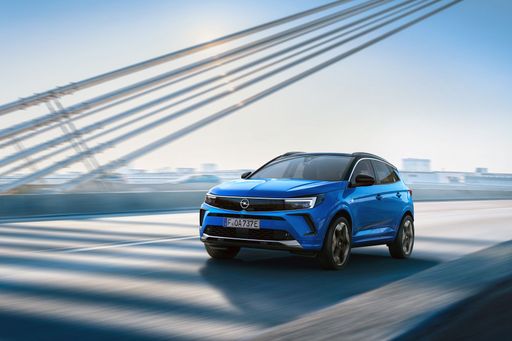 @ Opel / Stellantis Media
@ Opel / Stellantis Media
Vauxhall Grandland
Vauxhall Grandland
The Opel Grandland feels like a sensible, well-rounded SUV — neat styling, a spacious cabin and a composed ride that turns daily driving into a quietly pleasant experience. It’s a smart choice for buyers who want modern tech, good economy and a dash of German practicality without shouting for attention.
details @ Opel / Stellantis Media
@ Opel / Stellantis Media
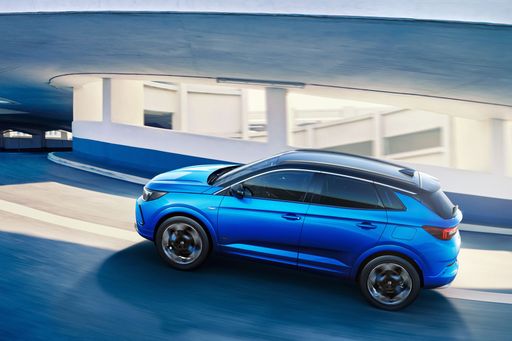 @ Opel / Stellantis Media
@ Opel / Stellantis Media
 @ Opel / Stellantis Media
@ Opel / Stellantis Media
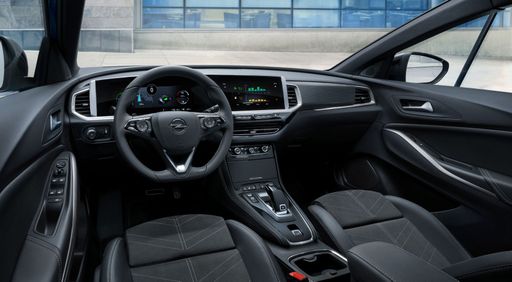 @ Opel / Stellantis Media
@ Opel / Stellantis Media
Renault Scénic
The Renault Scénic is a quietly clever family MPV that balances everyday practicality with unexpected flair, offering a roomy, flexible cabin that makes school runs and weekend escapes less of a chore. It won't dazzle like a sports car, but its composed ride, sensible tech and thoughtful storage solutions make it a superbly pragmatic choice for buyers who prefer substance with a wink.
details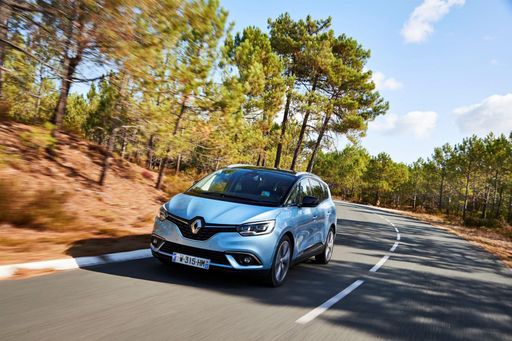 @ Renault Group Media
@ Renault Group Media
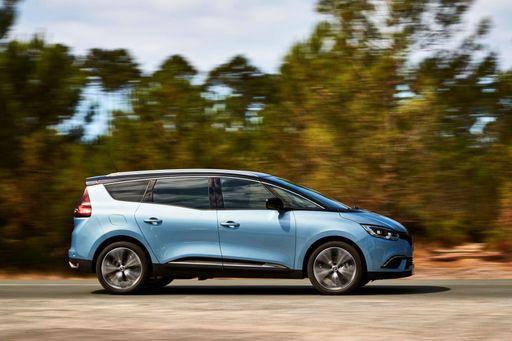 @ Renault Group Media
@ Renault Group Media
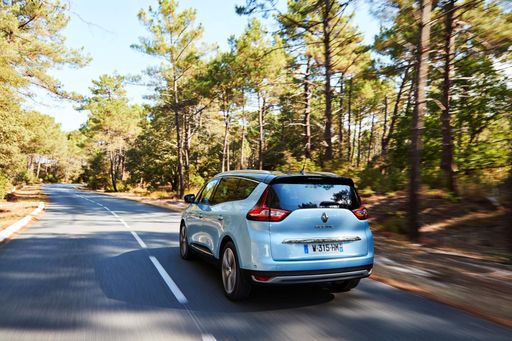 @ Renault Group Media
@ Renault Group Media
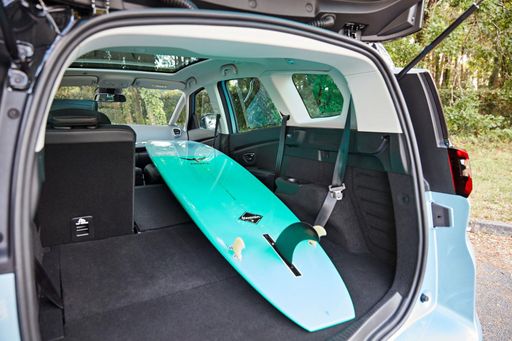 @ Renault Group Media
@ Renault Group Media
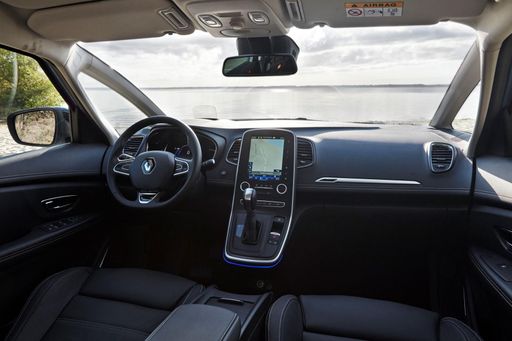 @ Renault Group Media
@ Renault Group Media
 @ Opel / Stellantis Media
@ Opel / Stellantis Media
|
 @ Renault Group Media
@ Renault Group Media
|
|
|
|
Costs and Consumption |
|
|---|---|
|
Price
32600 - 51400 £
|
Price
34600 - 44000 £
|
|
Consumption L/100km
2.6 - 5.6 L
|
Consumption L/100km
-
|
|
Consumption kWh/100km
17.8 - 18.6 kWh
|
Consumption kWh/100km
16.6 - 17.5 kWh
|
|
Electric Range
82 - 694 km
|
Electric Range
420 - 598 km
|
|
Battery Capacity
-
|
Battery Capacity
-
|
|
co2
0 - 126 g/km
|
co2
0 g/km
|
|
Fuel tank capacity
55 L
|
Fuel tank capacity
-
|
Dimensions and Body |
|
|---|---|
|
Body Type
SUV
|
Body Type
SUV
|
|
Seats
5
|
Seats
5
|
|
Doors
5
|
Doors
5
|
|
Curb weight
1675 - 2325 kg
|
Curb weight
1822 - 1927 kg
|
|
Trunk capacity
485 - 550 L
|
Trunk capacity
545 L
|
|
Length
4650 mm
|
Length
4470 mm
|
|
Width
1905 - 1934 mm
|
Width
1864 mm
|
|
Height
1665 mm
|
Height
1571 mm
|
|
Max trunk capacity
1580 - 1645 L
|
Max trunk capacity
1670 L
|
|
Payload
425 - 495 kg
|
Payload
514 - 518 kg
|
Engine and Performance |
|
|---|---|
|
Engine Type
Electric, Petrol MHEV, Plugin Hybrid
|
Engine Type
Electric
|
|
Transmission
Automatic
|
Transmission
Automatic
|
|
Transmission Detail
Reduction Gearbox, Dual-Clutch Automatic
|
Transmission Detail
Reduction Gearbox
|
|
Drive Type
Front-Wheel Drive, All-Wheel Drive
|
Drive Type
Front-Wheel Drive
|
|
Power HP
145 - 325 HP
|
Power HP
170 - 218 HP
|
|
Acceleration 0-100km/h
6.1 - 10.2 s
|
Acceleration 0-100km/h
7.9 - 8.6 s
|
|
Max Speed
170 - 220 km/h
|
Max Speed
150 - 170 km/h
|
|
Torque
230 - 509 Nm
|
Torque
280 - 300 Nm
|
|
Number of Cylinders
3 - 4
|
Number of Cylinders
-
|
|
Power kW
107 - 239 kW
|
Power kW
125 - 160 kW
|
|
Engine capacity
1199 - 1598 cm3
|
Engine capacity
-
|
General |
|
|---|---|
|
Model Year
2024 - 2025
|
Model Year
2025
|
|
CO2 Efficiency Class
A, D, B
|
CO2 Efficiency Class
A
|
|
Brand
Vauxhall
|
Brand
Renault
|
Is the Vauxhall Grandland offered with different drivetrains?
Available configurations include Front-Wheel Drive or All-Wheel Drive.
The prices and data displayed are estimates based on German list prices and may vary by country. This information is not legally binding.
